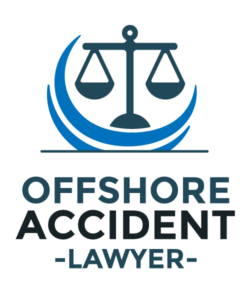Common Causes of Arm Injuries in Maritime Work and How to Avoid Them
Working on ships, docks, or offshore platforms demands strength, balance, and skill. Maritime work places employees in environments filled with heavy equipment, fast-paced operations, and constant exposure to hazards.
Among the many risks, arm injuries are one of the most common maritime injuries that disrupt both day-to-day duties and long-term careers. Understanding how these injuries occur and how to reduce the risks can help protect your health and maritime career.
Common Causes of Arm Injuries in the Maritime Industry
Arm injuries can take many forms, from simple strains to life-altering fractures. Some of the most frequent causes include:
- Repetitive strain: A maritime worker often lifts, pulls, and handles heavy lines, tools, or cargo every day. Over time, these repetitive motions cause arm muscle injuries like tendonitis, strains, and ligament tears. These conditions may develop slowly and worsen without proper rest.
- Impact accidents: Loose gear, swinging hooks, or falling objects frequently strike arms and shoulders. An impact can leave workers with deep bruising, fractured bones, or nerve damage. On crowded decks, these accidents happen quickly and with little warning.
- Slip and fall accidents: Slippery decks, ladders, and gangways are a leading source of arm injuries. Workers often instinctively use their arms to break a fall, resulting in dislocations, fractures, or torn muscles. Falls can also cause secondary injuries if arms are pinned beneath heavy loads.
- Caught-in equipment: Winches, cranes, and conveyor belts create risks of crushed arms or amputations if guards and emergency stops are not in place. These incidents are devastating and often prevent a worker from returning to duty.
- Overexertion: Long shifts with demanding physical tasks strain muscles and joints. Overexertion does not always involve a single incident but can leave lasting damage that limits mobility and strength.
These risks demonstrate why arm injuries remain one of the most common maritime injuries reported across the industry.
Reducing the Risk of Arm Injuries

Prevention requires a mix of training, safety measures, and personal awareness. Key steps include:
- Ongoing training: Employers should ensure workers know how to handle lines, secure loads, and operate machinery safely. New hires and seasoned crew alike benefit from refresher training.
- Protective equipment: Proper gloves, elbow guards, and braces reduce the severity of impact injuries and provide support during repetitive tasks.
- Rest and rotation: Fatigue increases mistakes and muscle strain. Supervisors should rotate assignments to limit overuse and schedule regular breaks.
- Deck and equipment maintenance: Keeping walking surfaces dry and well-lit reduces slip hazards. Routine inspections of cranes, winches, and hoists prevent mechanical failures that can injure workers.
- Ergonomic awareness: Workers can reduce strain by using correct body mechanics for lifting and pulling. Employers may provide ergonomic tools that reduce stress on the arms and shoulders.
- Clear communication: Coordinating tasks with hand signals, radios, or alarms reduces the chance of being struck by equipment or cargo.
By combining these steps, employers and workers can significantly lower the risk of serious injuries.
What to Do After Sustaining an Arm Injury
If you sustain an arm injury at your maritime job, take immediate action:
- Seek medical care: Even minor arm pain and swelling may signal a more serious injury. Prompt treatment helps recovery and prevents complications.
- Report the incident: Notify your supervisor right away and insist on completing an official accident report. This documentation is critical for any future claim.
- Keep detailed records: Save copies of medical evaluations, prescriptions, therapy notes, and correspondence with your employer or insurer.
- Follow medical advice: Attend all follow-up appointments and complete recommended therapy. Skipping treatment may hurt both your recovery and your claim.
- Protect your rights: Employers or insurance companies may pressure you to return to work early or accept a settlement that does not cover your needs. Speaking with a maritime work injury lawyer early helps secure fair treatment.
Recovery from lower and upper arm injuries can take weeks, months, or even longer. Having medical and legal support ensures that you can focus on healing instead of battling paperwork and disputes.
Know Your Rights Under Maritime Law

Maritime law protects different categories of workers in different ways:
- Seamen: Workers who spend a substantial amount of time on a vessel in navigation may qualify as seamen. They can bring claims under the Jones Act if employer negligence contributes to an injury. Seamen are also entitled to maintenance and cure, which ensures daily living expenses and medical treatment until they reach maximum medical improvement.
- Dock and harbor workers: Employees who work primarily onshore or around navigable waters are generally covered under the Longshore and Harbor Workers’ Compensation Act (LHWCA). This law provides medical care, wage replacement, and compensation for disability related to workplace injuries.
Because the remedies available depend on your job classification, speaking with a maritime worker injury attorney is critical. A maritime injury lawyer can guide you through the process, explain what benefits apply in your situation, and ensure your rights are protected.
FAQs About Arm Injuries in Maritime Work
What are the most common arm muscle injuries in this field?
Strains, tendonitis, and sprains are frequent due to repetitive lifting, hauling, and rope handling.
Can a maritime employee pursue a claim if their injury developed gradually?
Yes. Overexertion and repetitive stress are valid grounds for a maritime claim, even without a single traumatic accident.
What if my employer insists the injury was my fault?
Fault does not always prevent recovery under maritime law. A maritime worker injury attorney can evaluate your case and advise you on next steps.
Do I have to return to work if I am still in pain?
No. You should not resume duties until cleared by a medical professional. Returning too soon can worsen injuries and complicate your claim.
How quickly should I speak to a lawyer?

As soon as possible. A maritime work injury lawyer can help gather evidence and protect your rights from the start of your recovery process.
Get the Legal Help You Deserve
If you suffered an arm injury while working offshore, on a vessel, or at a port facility, you do not have to handle the process on your own. The attorneys at Schechter, Shaffer & Harris have represented countless maritime workers and fought to secure fair compensation for their injuries.
Contact us today to speak with a maritime injury lawyer who will stand by your side and guide you through every step of your claim.
The post Common Causes of Arm Injuries in Maritime Work and How to Avoid Them appeared first on Maintenance and Cure.
Source: Read More



